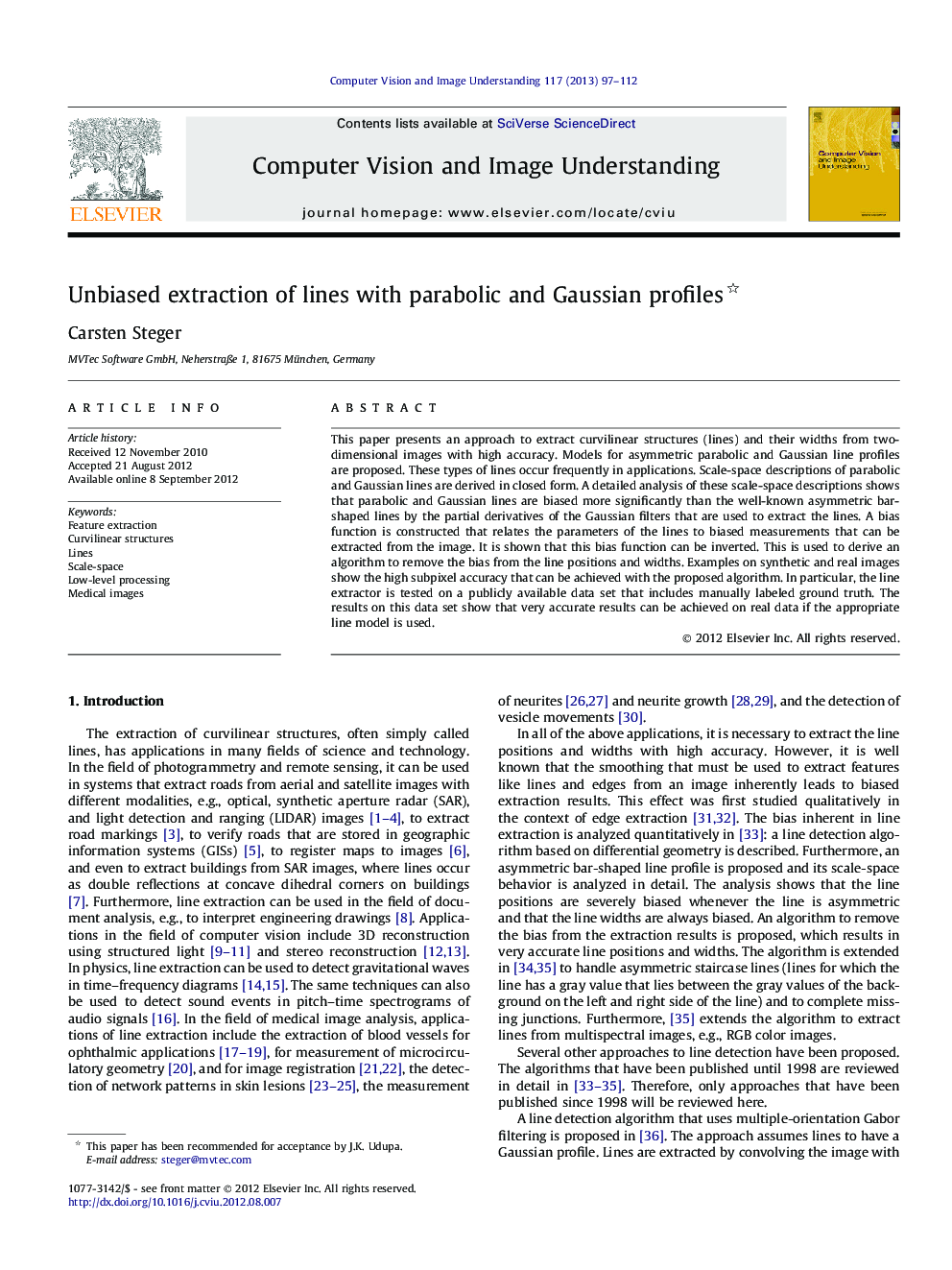| Article ID | Journal | Published Year | Pages | File Type |
|---|---|---|---|---|
| 527805 | Computer Vision and Image Understanding | 2013 | 16 Pages |
This paper presents an approach to extract curvilinear structures (lines) and their widths from two-dimensional images with high accuracy. Models for asymmetric parabolic and Gaussian line profiles are proposed. These types of lines occur frequently in applications. Scale-space descriptions of parabolic and Gaussian lines are derived in closed form. A detailed analysis of these scale-space descriptions shows that parabolic and Gaussian lines are biased more significantly than the well-known asymmetric bar-shaped lines by the partial derivatives of the Gaussian filters that are used to extract the lines. A bias function is constructed that relates the parameters of the lines to biased measurements that can be extracted from the image. It is shown that this bias function can be inverted. This is used to derive an algorithm to remove the bias from the line positions and widths. Examples on synthetic and real images show the high subpixel accuracy that can be achieved with the proposed algorithm. In particular, the line extractor is tested on a publicly available data set that includes manually labeled ground truth. The results on this data set show that very accurate results can be achieved on real data if the appropriate line model is used.
► An approach to correct the bias in curvilinear structure extraction is described. ► Models for two frequently occurring line profiles are proposed. ► The scale-space behavior of the profiles is analyzed to predict and remove the bias. ► Experiments show the high accuracy achievable with the proposed approach.
